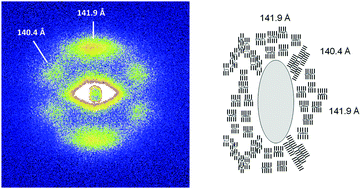Deformation mechanisms of sub-micrometer thermoplastic vulcanizates obtained by reaction-induced phase separation of miscible poly(ε-caprolactone)/dimethacrylate systems
Abstract
The micromechanical deformation mechanisms of sub-μm thermoplastic vulcanizates (TPVs) based on poly(ε-caprolactone) (PCL) and cross-linked methacrylate rubbers were studied by time-resolved small-angle X-ray scattering (SAXS) and wide-angle X-ray diffraction (WAXD) measurements in order to better understand the underlying deformation mechanisms responsible for the high elongation at break and good elastic recovery of sub-μm TPVs. It is demonstrated that, in contrast to neat PCL, the interlamellar void formation in the PCL matrix and subsequent coalescence of voids is suppressed by the presence of the rubber (nano)particles in these TPVs. The deformation of the TPVs under tensile conditions is dominated by yielding of the PCL matrix, which is initially localized at the equatorial regions of the rubber particles and progresses towards the polar regions at higher strains. Re-ordering of the crystal structures is both time and stress dependent, and stress relaxation of the TPV under tension is primarily governed by the break-up of the crystal lamellae at the equatorial regions of the rubber particles. This study demonstrates that the rubber particle size as well as chemical grafting of thermoplastic polymer chains onto the surface of cross-linked rubber particles are important parameters to control the mechanical deformation behavior of TPVs.



 Please wait while we load your content...
Please wait while we load your content...